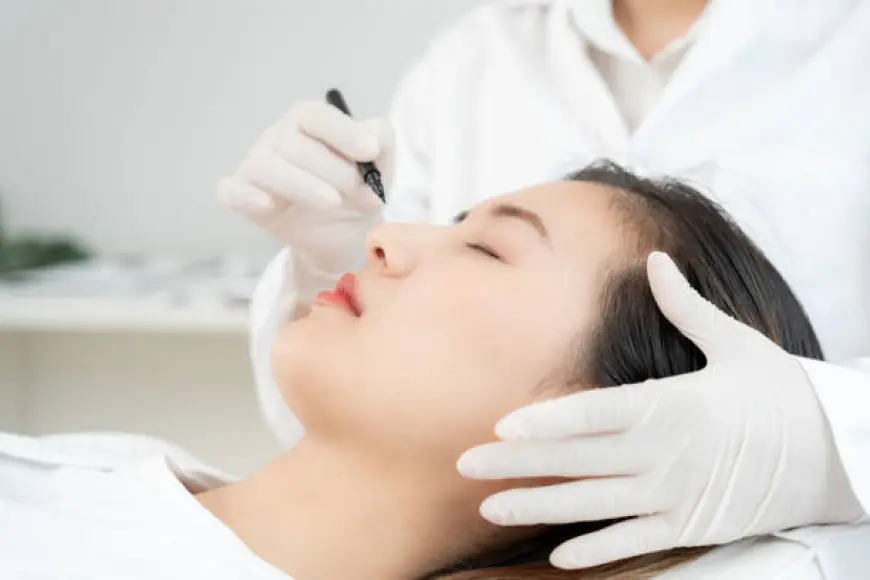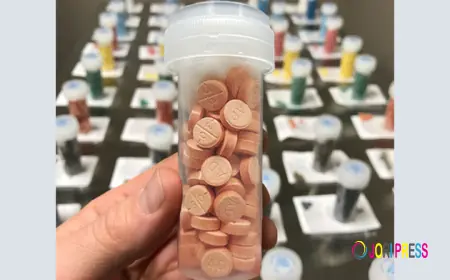Rhinoplasty Recovery Timeline: Riyadh Patient Experiences
Complete healing from a rhinoplasty can take up to a year, especially for complex cases or those involving thick skin.

Rhinoplasty surgery is a transformative procedure that not only enhances facial aesthetics but can also improve breathing and nasal function. However, the recovery process post-surgery is equally important for achieving the best results. Understanding what to expect during each stage of recovery helps patients prepare mentally and physically and ensures a smoother healing journey.
Introduction to the Recovery Process
Undergoing a Rhinoplasty in Riyadh(عملية تجميل الأنف في الرياض) involves more than just the surgical procedure — the healing process plays a crucial role in how the final outcome appears. Recovery is gradual, often stretching over several months before the nose fully settles into its new shape. Knowing the key milestones in this recovery timeline helps patients stay patient and proactive about their care. This guide outlines the typical phases patients experience, drawn from Riyadh patient experiences, focusing on what to expect and how to support healing effectively.
First Few Days: Initial Recovery Phase
The first three days after surgery are the most intense. During this period, swelling and bruising tend to peak. Patients typically experience tenderness, nasal congestion, and some discomfort around the nose and under the eyes due to bruising. A protective splint is usually placed on the nose to shield it and support proper alignment. It’s crucial to rest with the head elevated, avoid any physical strain or touching the nose, and apply cold compresses delicately around the area to minimize swelling.
At this stage, pain is generally manageable with prescribed medications, and most patients need to focus solely on rest to allow the body to begin the healing process. Riyadh patients often mention the importance of minimizing movement and following post-operative guidelines carefully to prevent complications.
One Week In: Swelling Plateaus but Still Visible
By days four through seven, swelling reaches its peak but starts to stabilize. Although the nose remains swollen and some bruising lingers, patients often begin to notice slight improvements from the initial surgery trauma. The protective splint usually remains on until the end of the first week, after which it’s removed during a follow-up visit.
Many patients feel ready to return to light daily activities, such as walking or desk work, but strenuous exercise and heavy lifting should still be avoided. At this point, makeup can help conceal bruising, boosting confidence for social interactions. Patient feedback from Riyadh highlights that maintaining a calm and elevated posture helps facilitate healing and reduces discomfort.
Weeks Two to Three: Noticeable Reduction in Swelling
During the second and third weeks post-rhinoplasty, visible bruising and most swelling subside significantly. Patients typically experience about 70-80% reduction in facial bruising and puffiness, which makes returning to regular social and work engagements comfortable. Still, mild puffiness—especially at the tip of the nose—is common and often only noticeable to the patient.
By now, most patients can resume normal low-impact activities, but high-intensity workouts should be postponed. Riyadh patients emphasize the importance of patience during this phase, reminding others that although visible swelling reduces, internal healing continues.
One to Two Months: Resumption of Regular Activities
By the end of the first two months, most swelling has resolved, and the nose begins to settle more noticeably into its new shape. Patients report feeling more like themselves and often express excitement about how their appearance evolves. However, subtle swelling may linger, especially around the nasal tip, which takes the longest to fully heal.
It’s advisable to gradually reintroduce normal routines and workouts but avoid any activities that may cause direct impact to the nose. Riyadh patients often share their experience of increased confidence during this phase, while still taking care not to rush the healing process.
Three to Six Months: Refinement of Results
Between three and six months, the nose shape becomes more refined. Residual swelling almost completely disappears, and subtle improvements in contour and definition become visibly clear. The nasal tip gradually gains its final form albeit still being the slowest to heal area.
During this mid-term recovery period, patients feel comfortable resuming most physical activities but often continue to avoid contact sports. Many Riyadh patients report feeling satisfied with their appearance by this stage but understand that minor refinements will naturally continue.
One Year and Beyond: Final Outcome
Complete healing from a rhinoplasty can take up to a year, especially for complex cases or those involving thick skin. By this time, all swelling subsides, and the nose assumes its permanent shape. Sensation and function return to normal, and surgical goals are fully realized with a balanced, natural-looking result.
Supporting a Smooth Recovery
Throughout the entire rhinoplasty recovery timeline, patients are encouraged to:
-
Follow all surgeon instructions meticulously
-
Keep the head elevated when resting
-
Apply cold compresses early in the process
-
Avoid strenuous activities and trauma risks
-
Maintain a healthy diet and stay hydrated
-
Attend all scheduled follow-up appointments
Adhering closely to postoperative care significantly influences recovery quality and final results.
Frequently Asked Questions
What is the typical swelling duration after Rhinoplasty in Riyadh?
Swelling usually peaks within the first week and reduces significantly by weeks two to three, with minor residual swelling lasting up to a year.
When can I resume exercise after Rhinoplasty?
Light activities like walking can resume after two to three weeks, but intense exercise or heavy lifting should be delayed until at least one month post-surgery.
Is bruising after Rhinoplasty normal and how long does it last?
Yes, bruising is normal around the eyes and cheeks and generally fades within two weeks.
How long before I can return to work or social activities?
Many patients feel comfortable returning to normal social or office work after about two weeks once major swelling and bruising subside.
What areas of the nose take the longest to heal?
The nasal tip is usually the slowest healing part, with subtle swelling potentially lasting up to one year.
Are there non-surgical alternatives to Rhinoplasty for nose reshaping?
Yes, non-surgical options like filler injections exist but provide temporary results and cannot address functional or structural issues.
What's Your Reaction?
 Like
0
Like
0
 Dislike
0
Dislike
0
 Love
0
Love
0
 Funny
0
Funny
0
 Angry
0
Angry
0
 Sad
0
Sad
0
 Wow
0
Wow
0



















































